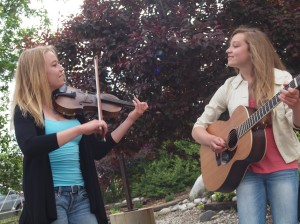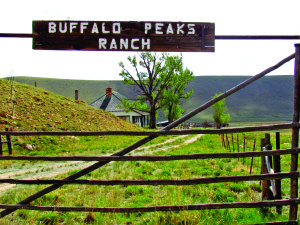by Tina Mitchell
Birders are crazy. Well, maybe not every birder. But many qualify, in my opinion. Drive more than 400 miles roundtrip in a snowstorm to see a Streak-backed Oriole from Mexico coming to feeders at Fort Collins? Wacky. Travel 300 miles one way to see a Broad-billed Hummingbird in Grand Junction, a species that you’ve already seen more than once in Arizona? Obsessed. Fly hundreds (if not thousands) of miles to Martha’s Vineyard to see a Red-footed Falcon from Europe? Well, at least in that case, you’d also be in Martha’s Vineyard. So that one may not be so completely off-base.
I’m not crazy in those ways but I do enjoy collecting data about birds, through citizen science projects such as Project Feederwatch, NestWatch, and Colorado’s Breeding Bird Atlas. In late June or early July, my husband – who is an astoundingly good sport – and I even get up at 3:45 a.m. to collect data. By 4:30, we’re heading for Mears Junction, where Marshall Pass Road meets U.S. 285 near Poncha Pass. Driving through a still-sleeping Salida and Poncha Springs, we need to arrive ½ hour before dawn – 5:11 a.m., to be precise. Maybe that sounds crazy to you.
But you should come along before you judge. We’re running our Breeding Bird Survey route on what I personally think is the most beautiful route in the state. (Of course, I’m biased.) The North American Breeding Bird Survey has been conducted in the U.S. and Canada since 1966, coordinated by the U.S. Geological Survey’s Patuxent Wildlife Research Center. At the height of breeding season, birders head out on designated 24.5-mile routes, stopping every 1/2 mile to count all of the birds heard and seen in a three-minute period. Colorado has 132 routes, more than any other state except California and Texas. We adopted the Marshall Pass Road survey route in 2010, and I can think of no more wondrous way to spend an early summer morning in the mountains – once I stop yawning.
At the eastern end of Marshall Pass Road, we start the three-minute timer, hop out into the chilly pre-dawn twilight, and open our ears. The avian symphony envelopes us – so many voices from every direction. Okay, don’t panic. Just breathe, listen and count. Don’t forget to look around, too, although we can’t see much yet in the pre-dawn twilight. American Robin – probably three or four. Common Nighthawk snatching a last-minute meal before retiring. Broad-tailed Hummingbird – three. Spotted Towhee up the hill. Common Yellowthroat in the cattails. American Dipper singing its lovely, tinkling song. Yellow Warblers and Red-winged Blackbirds by the creek. The timer goes off; we get back in the vehicle and move 1/2 mile down the road to do it all over again – 49 more three-minute stops before we reach the end of our 24.5-mile route.
As we gain altitude, the voices change. Warbling Vireos and MacGillivray’s Warblers chime in. Ruby-crowned Kinglets abound as we climb. Further up, songs of Hermit Thrushes and White-crowned Sparrows reach our ears. A loud flapping of wings down the road announces a Dusky Grouse, staring then heading back into the trees. Near the top of the pass, Wilson’s Warblers and Lincoln’s Sparrows flit about the low willows and grasses.
After about three hours, we cross the Continental Divide at the top of Marshall Pass. On the way down, the road meanders through ponderosa, fir, spruce and aspen; streamside habitats with waters rushing so loudly you can hardly hear anything else; high-altitude wetlands; rolling grasslands.
We spot other creatures, although we count only the birds. A snowshoe hare sports half of its white winter plumage and half of its dark summer plumage. Golden-mantled ground squirrels eye us at the top of the pass. ATVers wave as they motor past. We stop for a quick chat with hikers traveling the Colorado Trail or a bicyclist enjoying the gentle slope of this railroad-grade road.
At mile 24.5, we end the count, head down to Sargents, buy some snacks, and start up Monarch Pass toward home. Most years, we’ve identified nearly 40 species and more than 300 individual birds. We’ve contributed to a marvelous database documenting avian breeding trends over the past 47 years. We’ve spent a glorious morning enjoying summer’s birds on an accessible, high-altitude mountain road with a variety of lovely habitats. In my quirky brain, it doesn’t get better than that.
Unless you consider Salida’s Christmas Bird Count, when we join other area birders on a day near the winter solstice in the cold, wind, sun, snow, rain – whatever – to tramp around part of a 15-mile-diameter circle to count winter’s birds.
Okay – we’re officially crazy.
Tina Mitchell watches nature with her human and canine family from their perch in the piñon/juniper habitat of western Fremont County. When she needs to pay the bills, she shows up as a research psychologist on the University of Colorado Anschutz Medical Campus in Aurora.



